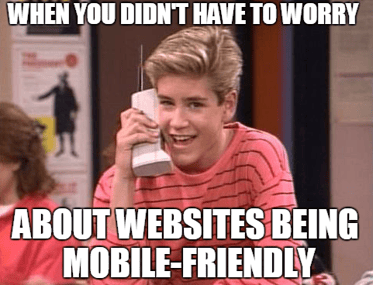How to Scare Away Member Loyalty & Engagement in 10 Easy Steps
When membership organizations make bad decisions, we can learn a lot from their mistakes. Here is a tongue-in-cheek look at ten easy ways to scare away member loyalty and engagement. About a 7 minute read.
Sometimes member loyalty is skittish as a kid in a haunted house, tensed to bolt at the first sign that all isn’t well. Some members may fear a horror-filled experience. Others may worry your organization is secretly an identity-snatching zombie.
The worst thing is, they don’t often stay with organizations long enough to find out whether these warning signs are scary monsters or (more likely) simple mistakes.
My role as a marketing consultant has allowed me to work with all types and sizes of membership organizations. From large organizations with a million or so members, to small non-profit and trade groups with just a few thousand members. Most organizations seem to get it. They’ve figured out how to adapt to meet the unique needs of their members, and they can seamlessly integrate our discount platform into their existing suite of member benefits and privileges.
A few others -- dare I say -- are unprepared for success.
They have so many fundamental problems with how they run their organization that adding a powerful engagement tool, even one backed by the best discount program provider, will actually make matters worse.
After more than a decade in working with various groups, I’ve noticed some important patterns among the few groups that struggle the most. The ones that send members fleeing in the other direction.
I think there’s great value in learning from the mistakes of others, so here’s my list of the ten easiest ways an organization can scare away their member loyalty and engagement:
1. Deliver Less Value to Members than the Cost of Membership
Does your organization consider how members view the ROI of being a member? Members think about it every time they receive a renewal reminder. So if you’re skimping out on the benefits you offer, you’re bound to see a drop in renewal rates.
However, when members recognize that the value of being a member exceeds the cost, they will grow far less sensitive about the price of renewing, and their loyalty and engagement will be the natural result.
Don’t ever forget your members are being bombarded with invitations to join, engage, and receive the benefits offered by other organizations. Countless other clubs, groups and organizations are vying for the attention of your members. That's why the benefits you offer your members must deliver real value. Value attracts attention. Value leads to engagement. Therefore, offering your members meaningful value added benefits is the first step to engagement.
2. Embrace Your Narcissism
In Gre ek mythology, Narcissus fell in love with his beauty, becoming preoccupied with his reflection. Today his name is synonymous with the shallow and self-absorbed who obsess with maintaining a false or misleading image. In this context, a narcissistic organization is preoccupied with themselves, and will always talk about themselves, instead of talking about what they can do for their members.
ek mythology, Narcissus fell in love with his beauty, becoming preoccupied with his reflection. Today his name is synonymous with the shallow and self-absorbed who obsess with maintaining a false or misleading image. In this context, a narcissistic organization is preoccupied with themselves, and will always talk about themselves, instead of talking about what they can do for their members.
These organizations love talking about internal matters only the staff cares about. Let’s face it, nobody really cares or reads “A Message from the CEO/Executive Director.” Or that you’ve hired a new assistant to the regional director. It's just not adding value to your members.
These groups see members as assets to be exploited. They want to extract as much value as they can before the member goes away. They are always spinning the narrative in their favor without ever owning up to their mistakes. They come off as phony or lacking in authenticity. Worse yet, they lack insight into how their members truly view their organization.
Most people avoid narcissists once they discover them. And likewise most members will drop a narcissistic organization like a hot potato, once they’re on to you.
3. Limit the Number of Emails You Send to Members
If you want your organization to struggle, don’t send many emails to your members. That’s because email remains the most effective communication tool for organizations nationwide. According to this Marketing General study, 63% of all member organizations report email is their most effective communication tool. Frequent communication is critical to staying top of mind with your members, and keeping them engaged.
Organizations that struggle with engagement are consistently inconsistent in sending emails to their members. How often is enough? Once or twice a week? A few times per month? According to the same study mentioned above, the typical membership organization sends four emails per week. Four emails per week may be too many for your organization, but you make that determination based on testing and metrics, not guesswork and assumptions.
Avoid letting your unsubscribe rate dictate your email frequency. Every email will result in a few unsubscribes, but typically that rate should be around 1% or less of your delivered emails. But if your emails are relevant and engaging, members won’t unsubscribe. If you see a spike in your unsubscribe rate, then back off a bit on the frequency and improve the quality of your content. But you’ll never know your sweet spot until you test it.
4. Send Impersonal Emails That Lack Relevance
One-size fits all email communications are not only forgettable and boring, but ineffective. Customized and personalized emails perform better if the email reflects a member’s unique name, profile, demographics or preferences.
How much better do these personalized emails perform? They are 26% more likely to be opened, deliver 6 times higher transaction rates, and generate 58% more revenue. Organizations who enjoy renewal rates of 80% or higher are 22% more likely to use personalization in their member communications, as opposed to groups that don’t.
Yet despite proof that customized emails deliver better results, less than half of all member organizations send personalized emails to their members or prospects.
5. Dismiss Marketing Automation - It's an Expensive Fad
Most organizations who struggle with engagement fail to commit the necessary resources to marketing; to reaching out to their members in effective and efficient ways. Instead, they rely on old-school tactics like direct mail campaigns, buying print ads, or maybe sending a targeted email or two. But without the means to test and iterate new marketing strategies, most of these organizations see modest results and dwindling membership rates.
Marketing automation changes all that. It provides the software tools necessary to automate your member acquisition and retention strategy. Through the use of predetermined workflows and triggered emails, you can automate the most tedious and time consuming functions, allowing your team to focus on more productive tasks.
From creating an automated series of emails that can help jump-start member re-engagement, to setting up a series of “drip” emails to inform your potential members about what they're missing out on, marketing automation can pay for itself, if done correctly.
Of course, you will also enjoy greater reporting capabilities to identify what works and what doesn’t. With a plethora of new metrics, member acquisition and retention is no longer a guessing game.
6. Make it Hard for Members to Pay You
If you want to anger your members, make it a challenge for them to pay you. Penalize them because they don’t conform to your preferred methods of payment.
For example, some organizations still refuse to accept American Express cards as payment, citing the higher processing fees as an excuse. But with over 140 million cardholders world-wide, refusing AmEx cards is being penny-wise and pound foolish. Visa and Mastercard both tend to promote their fees of 1-2% advertised rate for debit transactions, but are sly about how they add a markup percentage and ancillary fees for credit transactions. All AmEx charges are credit transactions, so in all likelihood, the fees you’re paying AmEx are roughly the same as those for Visa and Mastercard. In addition, AmEx cardholders have greater discretionary income, with a 36% higher take-home pay than other cardholders. This higher income can translate to higher renewal rates because they are less sensitive to the costs of membership.
Additionally, if your members want to pay by Venmo or PayPal, set it up for them. If they use a credit card, don’t tack on the processing fee. How tacky is that?
Finally, look into accepting EFT (Electronic Funds Transfer) as a form of dues payment. Last year, there was a 70% increase in the number of organizations accepting EFTs, and a big reason is because it can reduce lapse rates. And don’t be afraid to allow members to make annual, semi-annual, or even quarterly payments, depending on how much you charge for dues. Of course, always give members the ability to modify or cancel their EFT payment.
7. Always Assume Lapsed Members Will Never Reinstate Their Membership
Just because a member hasn’t renewed, doesn’t mean they are disaffected forever. Lapsing can mean a number of things, such as simply forgetting to renew (which accounts for about 21% on all non-renewals.) But your lapsed members are your best pool of potential members because at one point, they saw the value of being a member.
If a member fails to renew after a few renewal attempts, don’t give up. An increasing number of organizations (21% in 2018) are never giving up on lapsed members, and will continually find ways to win them back.
8. Ignore Your Churn Rate
What is churn? The rate at which members cut ties with your organization. Knowing your churn rate is a critical metric to follow on a regular basis. Your organization can’t grow without knowing if your members are unhappy with you or not.
Members who cut ties with you are expensive, especially if you are losing established members. The costs of acquiring or replacing members is expensive – as much as five times higher than the costs of keeping an existing member. Reducing churn can translate to a significant increase in revenue. This study shows boosting retention by 5% can boost revenue 25-95%. But you first need to know if your churn rate is good or bad.
What can you do to reduce churn? Identify at-risk members before they lapse. Crunch your data and find patterns that indicate lagging engagement. The red-flags could include never logging in, never opening an email, or any other pertinent metric unique to your organization.
For members who have lapsed, reach out and (sincerely) ask them for their input. Ask how your organization can improve. Ask what benefits you are lacking. Ask what they wish would change about your organization. This information can lead to changes that can benefit all members.
9. Ignore the Power of Referrals
Existing members are going to be a powerful source of acquiring new members, and the benefits of referrals can have an impact on your member acquisition costs. Few organizations can grow without expanding their pool of members, but as much as 60% of new member acquisition comes from word of mouth referrals. Isn’t it about time you start your own referral program?
Referral programs are deliberate and systematic processes put in place to incentivize member referrals. It should simplify the process, and grease the wheels to promote more and more member referrals.
Offer a compelling incentive for your existing members to refer new members. It could be an extension to their annual membership dues for every new member they recruit, or a credit toward their future dues. Some software companies exist to make it easy to track and pay out referral rewards.
10. Ignore Your Mobile Connected Members
 Smartphone adoption rates continue to climb. The Pew Research Center estimates a 77% of adults use a smartphone in 2018, that’s roughly 251 million smartphone users in the USA. More than 91% of college grads own a smartphone.
Smartphone adoption rates continue to climb. The Pew Research Center estimates a 77% of adults use a smartphone in 2018, that’s roughly 251 million smartphone users in the USA. More than 91% of college grads own a smartphone.
Your members use their phone for just about everything, from communicating to socializing, from banking to navigating. Your organization can no longer afford to view a mobile app as a “nice-to-have,” it’s now a “need-to-have. ” Your members spend an average of three hours per day on their mobile device. So if you want to be relevant to your members, offer a mobile app.
So why doesn’t your organization have a mobile app? It’s not as expensive as you may think. Start small with an app that can get members in the habit of looking to your mobile app for value, such as a turn-key app that offers members-only discounts.
Once you get members to use the app, then expand the services to include renewals, calendars, event registration, certification tracking, etc. You’ll be exceeding expectations, and staying top of mind more frequently than if your benefits are only accessible on a desktop.
Here's An Idea: Focus on Delivering Value
I admit, my snarkiness can be a little off-putting if your organization is struggling. So on a serious note, if you’re trying to boost engagement and feel a little overwhelmed by all the challenges, start with one of these issues and work your way through it. I’ve seen groups make significant improvements in a short amount of time by focusing on delivering value. Once you have a culture of serving members with value, you’re on the right path.
What’s your take? Have I missed anything? I’d love to hear your feedback.
Topics: Customer Engagement, Member Benefits, member engagement, loyalty programs, best employee discount programs, membership benefits
Written by: Gary Toyn







.jpeg)







Share your Comment.